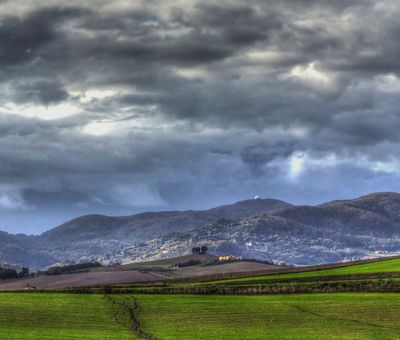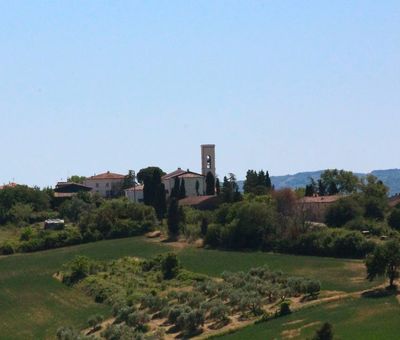The whale in the hills
If you pass through these beautiful rolling hills, and feel like you are more sailing than walking, you are not so far from the truth. Here, once upon a time, it was indeed all sea. The many fossils found here confirm it, and make Orciano Pisano the most important stretch of the Tuscan hills from a paleontological point of view. In 2006, near Casa Nova, the skeleton of a baleen whale was unearthed, ten metres long and three million years old. The specimen is housed in the Natural History Museum (in the geology and palaeontology section) of the University of Florence.
The perfect photography set
This landscape was sculpted by the hand of man, but with such sensitivity as to be almost undetectable. The countryside around Orciano Pisano is maybe one of the most immortal in Tuscany, and is always hosting photography workshops, attracting lovers of the art from all over the world. Every season has its reason: if spring is defined by its green, it is summer that turns the fields gold with wheat. The gentleness of these hills, set in a landscape that knows how to breathe, lends itself to the slower kinds of tourism, be it in the saddle of a bicycle or a horse, or in a meditation posture.
Wine that savours of the sea
Wine has been made here since the fifteenth century, a wine in which you can taste the soil of the floodplains, taste the clay. If the town stands little more than a hundred metres above sea level, the hills don’t even reach two hundred. Oenologists have thus had to work hard to find the places where the vines will flourish best, and make them yield wines of quality.
In 1965, the winemakers of the Pisan hills clubbed together in a consortium and decided to name one of the wines produced in this area after a Roman centurion, Torpè, thus forging a link with classical history. The wines from Orciano Pisano that enjoy designation of origin labels include Costa Toscana IGT, Terre di Pisa DOC and Toscana IGT.





